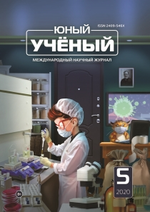“Have you heard about the claustrophobic astronaut? He just needed some space.” Did you understand this joke? No? How about this one: “A: What breed of dog can jump higher than buildings? B: Any dog, because buildings can’t jump.” Did you get it? Well, the next one is harder: “I got my daughter a fridge for her birthday. I can’t wait to see her face light up when she opens it.” If you have difficulties understanding jokes in English, then you might find this article useful. As an English language learner, I always found it difficult to understand jokes when watching cartoons or films in English. This problem resulted in the project in which I tried to answer these two questions:
1. What knowledge is necessary to understand jokes in English?
2. What does a translator need to know to translate jokes from English into Russian?
Whether we want or not, mass culture takes a significant part in our lives and we cannot ignore it. According to Sherman, it happens because the supply of content is enormous, and the materials are very high quality, relatively cheap, and constantly renewed [1, p.12]. Every day we face with sources of popular culture including films, music, television programs or talk shows. All these materials are a great source for language learners to practice and improve their language skills and knowledge. In addition, mass culture materials are an example of authentic language which is important in language acquisition. All these mass media sources include jokes and understanding them can be a way of improving a language level. That is why this project results can be relevant and useful for language learners who would like to understand jokes while watching films or cartoons.
To identify what helps native speakers understand jokes, it is necessary to analyze what knowledge is involved and how jokes are created.
Firstly, when it comes to understanding jokes, as well as understanding any information, there are two types of knowledge that are unconsciously used by native speakers — systemic and schematic knowledge [2, p. 189]. Systemic knowledge is responsible for understanding words and grammar used in jokes, while schematic knowledge involves general knowledge of the world, the latest news, culture, references to famous people or popular books. For example, this joke requires systemic knowledge:
“Did you know that name of Stephen King’s son is Jo? I’m not joking but he is.”
This is a systemic knowledge joke because to understand it, we do not need to know who Stephen King and his son are. Instead, only their surname and name of his son are important for understanding the joke (and this information is included in the joke — joking ).
The following joke, however, requires more than the knowledge of words and grammar:
“Helvetica and Times New Roman walk into a bar. “Get out of here”- shouts the bartender — “We don’t serve your type”
This is a schematic knowledge joke, because we need to know that Helvetica and Times New Roman are fonts of Microsoft Office Word.
Secondly, there are different ways which can be used to create jokes [3]. Some of these ways are:
- Pun (wordplay) which has such sub-categories as:
- Homonyms play (riverbank — saving bank)
- Polysemy (get — has multiple meanings)
- Proper nouns (Alaska — I’ll ask her)
- An ambiguity of grammar (word order, parts of speech)
- Cliché jokes, which have a standard structure (Knock, knock)
- Situation jokes, which are funny in certain situations.
- References to famous people, events, films, or music.
In most cases, both types of knowledge and ways of creating jokes are important to understand a joke. Native speakers can unconsciously use this knowledge while for language learners and translators it is important to know this information. To prove, that jokes include all the areas mentioned, this joke from a Marvel superheroes movie can be used as an example:
Mailman: Are you hmm Tony Stank?
Tony’s friend: Yes, this is, this is Tony Stank.
This joke requires both systemic and schematic knowledge. To understand this joke you need to know what “stank” means and that the name of the man is Tony Stark. The joke is based on incorrect spelling/pronunciation of the character’s name by the mailman, consequently it is a situation joke too.
As there is much information involved in understanding a joke, it can be quite challenging for translators to translate a joke without losing its meaning. For example, this joke from the show “Sam and Cat” on Nickelodeon:
Cat: “Every time you push number buttons you can hear beep. So, I started thinking about that old song: (singing) “Take me down to the basement, fill the buckets with cheese”.
Sam: “Wait, what? No, no, no, “take me out to the ball game”
This is a joke requiring schematic knowledge because it is necessary to know lyrics of the song “Take me out to the ball game” to understand absurdity of lyrics that Cat sings. Also, it requires to use rhyme when translating. However, in Russian this joke lost its meaning and is not funny:
Cat: “Вот мы висим на бейсболе, здесь крутая тусня.”
To find out what translators should know to translate jokes closely to their meaning in the original language and make it funny in translated version, it was decided to compare different samples of translation of the cartoon called “Star vs. Forces of Evil” by Disney and a translator Dima Syienduk.
In English: “I knew you would like here. This place is full of squares.” Many square characters groan.
Translation by Syienduk: Я знала, что тебе это место понравится, ведь тут скучно в квадрате.
Translation by Disney: Я знала, что ты оценишь, тут полно ботаников.
It is a systemic knowledge joke because it is based on the two definitions of the word “square”. The first definition is a geometry shape, and the second one is a boring person. In addition, it is homonyms play because by square the character means a boring person, but there are actual squares in this scene. Syienduk included the second meaning of the word in a funnier way, thus making the scene with squares meaningful, while Disney translated word for word.
In English. Star (when getting the results for a test): “I got an ‘F’ for fantastic”.
Marco: “That is an ‘F’ for fail”.
Translation by Syienduk. Стар: “Я получила кол, что значит колоссально!”
Марко: “Вообще-то, кол — это единица”.
Translation y Disney. Стар: “Яполучила Ф что значит фантастично!”
Марко: “Вообще-то Ф — это двойка”.
Understanding this joke needs schematic knowledge of the American grading system. Humor is based on beating the roots or parts of words, in this case of mark “F” and words “fantastic”/ “fail”. Syienduk tried to translate the joke relating it to the grading system of Russia and thus, making it more understandable and funnier.
In English: “What is that fresh of breath air”.
Translation by Syienduk: Кто этот модрый долодец (добрый молодец)?
Translation by Disney: Кто этот ветерок нового дуновения?
It is mixed joke — schematic and systemic. We need to know the idiom “breath of fresh air” which means someone or something that makes a situation feel new, different, and exciting. Beside this idiom we need to know that Star, the girl who is saying this sentence, is from another dimension, which means that she does not know Earth’s language features well. As a result, Star accidently changes the word order in the idiom and that is how the joke is created.
Taking everything into account and by comparing the two versions of translation, it can be concluded that Syienduk’s translation was better because he replaced English idiom with Russian (breath of fresh air — добрый молодец). Also, he tried to save meaning of jokes, even if it untranslatable (squares — скучно в квадрате). As for Disney’s translation, in most cases they had word for word translation and no changes, which can be called “lazy translation”.
There are several conclusions I made as a result of this project. In most cases, word for word translations do not make sense. In addition, even a high level of language proficiency of the first and a foreign language is not enough, it still requires rich imagination and creativity of a translator. To understand a joke, English language learners should learn not only words and grammar, but also culture of English-speaking countries.
References:
1. Sherman, J. (2003) “Using Authentic Video in the Language Classroom” Cambridge University Press
2. Hedge, T (2000) “Teaching and Learning In The Language Classroom” Oxford: OUP
3. Ritchie, G. (2004) “The Linguistic Analysis of Jokes” Routledge










